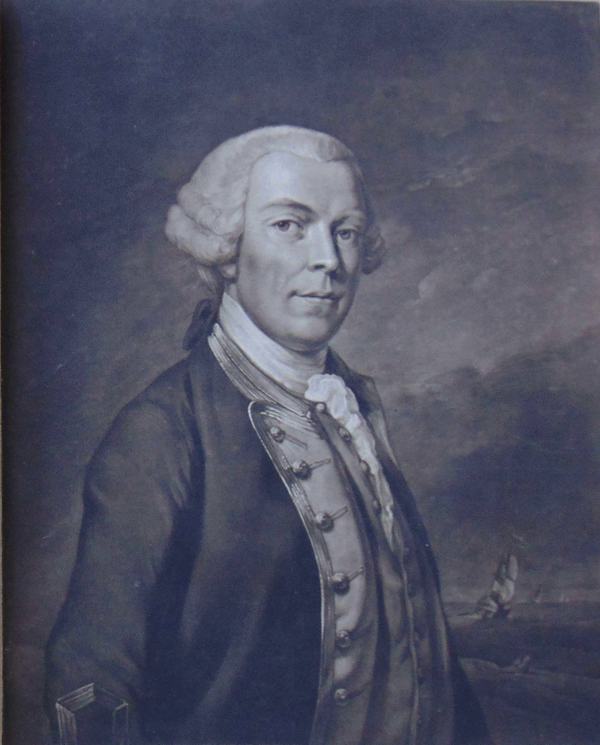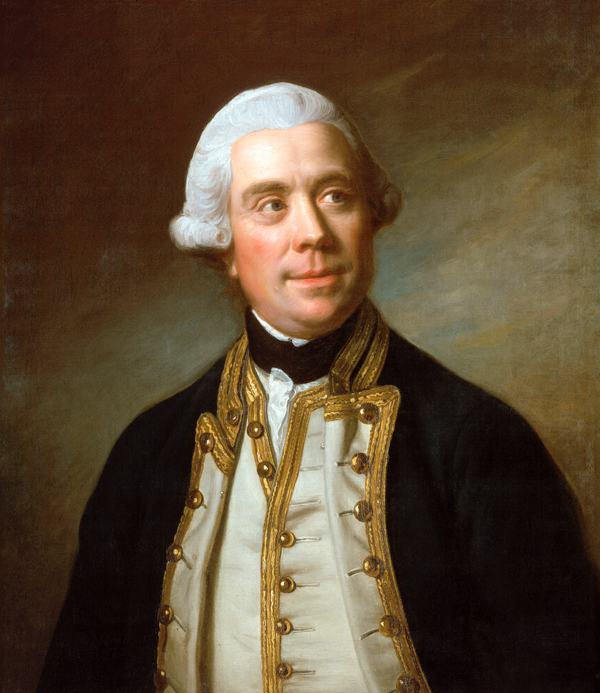Admiral Samuel Barrington
Samuel Barrington was the fith son of John Lord Viscount Barrington (1st) and was born at Beckett in the Parish of Shrivenham in 1729. He joined the Navy in 1740, serving in the ‘Lark’ under Lord George Gordon. He passed his lieutenant’s examination on 25 September 1745, gained command of the sloop ‘Weasel’ in early 1747 and became captain of the frigate ‘Bellona’ on 29 May that year before moving to the ‘Romney’. In the Mediterranean, he commanded the frigate ‘Seahorse’; he captained the ‘Crown’ (44 guns) off the Guinea coast and the ‘Norwich’ off North America, 1754–55. From 1757 to 1761 he was captain of the ‘Achilles’ (60 guns) in various actions. In 1762 Barrington moved to the ‘Hero’, 74 guns, in the Channel. With peace in 1763 came unemployment; he was finally appointed to the 36-gun frigate ‘Venus’ in 1768, Barrington becoming flag captain to the duke of Cumberland, who was promoted rear-admiral in the ship. In 1771 he was appointed to the ‘Albion’, 74 guns, in the Channel Fleet. In 1777 he commissioned the ‘Prince of Wales’, 74 guns, and was promoted rear-admiral of the white on 23 January 1778.
Barrington sailed to the West Indies to take command of the Leeward Islands squadron, arriving at Barbados on 20 June 1778. On 14 December 1778, with General James Grant, he launched an assault on St Lucia just as d’Estaing’s French squadron approached. Barrington’s squadron was able to fend off the French force while allowing Grant’s troops to establish their positions. Eventually, the French governor surrendered after d’Estaing withdrew. Barrington was promoted vice-admiral of the blue on 19 March 1779 and clashed with d’Estaing again off Grenada on 6 July and at St Kitts on 22 July that year. He was promoted vice-admiral of the white on 16 September 1781 and raised his flag in the ‘Britannia’ under Lord Howe in the Channel Fleet. He captured much of a French convoy heading for the East Indies on 18 April 1782; and was with Howe at the relief of Gibraltar in October 1782. He struck his flag on 20 February 1783 and was promoted admiral on 24 September 1787.
Of more local relevance famously, following a two-hour naval battle outside Le Havre in 1759, the defeated French took serious losses and the English a great deal of booty. Among this was the flag of the French ship, ‘Compte de Florentine’ which Samuel triumphantly seized and hung in the chancel of St Andrew’s church, Shrivenham for about 175 years. Today, a remarkably fine white marble flag, by Flaxman, replaces the original.
Samuel Barrington died in August 1800. The Shrivenham Parish Register records that he died of Dropsy and was interred in the family vault under the porch of St Andrew's church, Shrivenham on 26th August. This was confirmed when the entrance of the vault was discovered by workmen in the summer of 2020 and surveyed before being re-sealed. See
Listing No N799
Year:
2022
Place:
Shrivenham
Ref:
Online only
Item Ref:
N86
Find it:
Online only
Do you know?
We are always on the look-out for more information about Shrivenham and district. If you have old photos, know of historical facts, old documents (especially deeds) please contact us...
If you would like to view any item please email us to make an appointment, details on the Home page.


